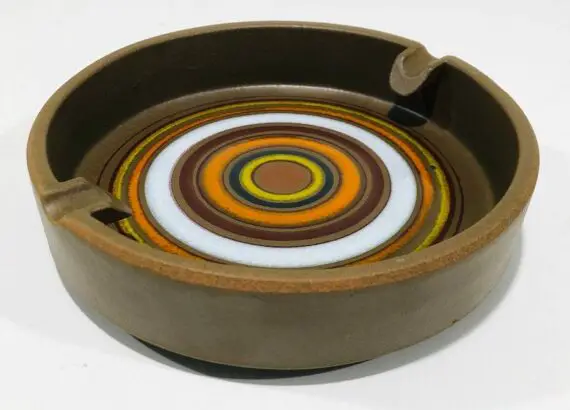What is Keramik Pottery? History, Facts, Description

Also referred to as Ü Keramik pottery, this type of pottery originated in the western part of Germany. Keramik pottery was created together with various kinds of glazes to complement it.
Several categories of pottery exist under this category, so they are generally referred to as West German Pottery. Sometimes, the only things that differentiated them besides the producers were the type of glaze used and the style of creation.
Among others, the most popular West German Pottery created between 1940 and 1990 are
- Bay Keramik
- Dümler and Breiden
- Scheurich and Carstens
- Ulmer Keramik
Table of Contents
History of Keramik Pottery
In the 1940s in West Germany, a quaint metalwork factory decided to dedicate a small area to pottery. This branch was in charge of ceramics for everyday use, including vases and cachepots.
The potteries division grew in fame that soon it began to export the said potteries.
Between 1950 and 1970, the art spread outwards to other parts of Western Germany, and many pottery studios were established. After that peak period, the attention it received dwindled into nothingness, and in 1990, they went bankrupt.
Several years later, curators decided to revive the old art form and the unique “fat lava” used to decorate it.
Today, pottery collectors and lovers of art would be enthralled by the elegance of the West German style of pottery.
Some Facts About Keramic Pottery
- Keramik pottery came as an afterthought, not the company’s original product line, Bay Keramik.
- When it was first created, Keramik pottery glazes had selenium mixed in to make the color pop. Selenium is toxic when ingested in high doses.
- The “fat lava” technique existed before Bay Keramik and Otto Natzler popularized it.
- When in 1965 Germany welcomed volcanic lava, many controversies had already surrounded the moniker “fat lava.” As a result, some curators took it upon themselves to make thinner versions of the said lava successfully.
- The volcanic lava finish of most Keramik pottery vases resulted from a clandestine art experiment.
Before World War II, the German government implemented laws that suppressed many things, including art. As a result, Otto Natzler and his wife Gertrud fled to America and continued their artistic research.
Needless to say that their discoveries completely revolutionized pottery in Western Germany.
Description of Keramik Pottery
Irrespective of the producers, the most common form of glazing among West German potteries was the “fat lava” glaze. “Fat glaze” quite accurately translates to “thick lava” in present-day English.
The function of the fat lava or volcanic glaze was to give the pottery the semblance of a volcanic eruption. Typically a thick red color, the bubbly glaze is applied around the top of the vase and allowed to run down the sides. After that, the pottery is thrown in the kiln for more baking.
At some point in the creation process, some craters are created along the glazed exterior of the pottery. The craters are formed when silicon carbide powder is mixed into the glaze. At certain temperatures, the silicon carbide causes mini-explosions to occur in the mixture. These craters complete the volcanic eruption getup.
In addition to the color red, the “fat lava” glazes also came in bright orange and brown. Later, West German pieces featured thick glazes of blue, silver, black, and a few other bold colors.
Other more subtle types of Keramik pottery exist as vases with warm, subtle colors. These potteries often come as planters, ornamental ceramics, hanging planters, and so on.
As a design choice, vases made by Ulmer Keramiks often come in such designs. The most common designs for these quaint handmade potteries are flower designs and depictions of nature.
An example of the Ulmer type of Keramik is this handcrafted, vintage Antique Ulmer Keramik Vase. This vase features an olive tree with a swing atop, which a girl is swinging.
Tools For Keramik Pottery
The tools used here are pretty basic ones. The emphasis is on the techniques used, the timing, and the amount of glaze used. The essential tools are:
- The clay
- The pottery wheel
- Towels
- A kiln
- Glazes
- A brush to apply the glaze
- A metal coil to remove the pottery from the wheel when molding is done
- Metal prongs to extract the bisque from the kiln
- Silicone carbide to create the craters for a volcanic glaze finish
- Favored accessories like sticks for handles, gems, gold and silver powder, etc.
Examples of Keramik Pottery From Etsy:
1. This Vintage 1950’s Schlossberg keramik Planter was created by Liesel Spornhauer. The simple design features white concentric circles between parallel lines against a deep brown background down the vase.

2. This Mid Century Jaspatina fishmouth Vintage 1950s ceramic vase features the modern touch of blue and yellow glaze. The gold lining along the rim is also used on the inscription bearing the “West Germany” signature.
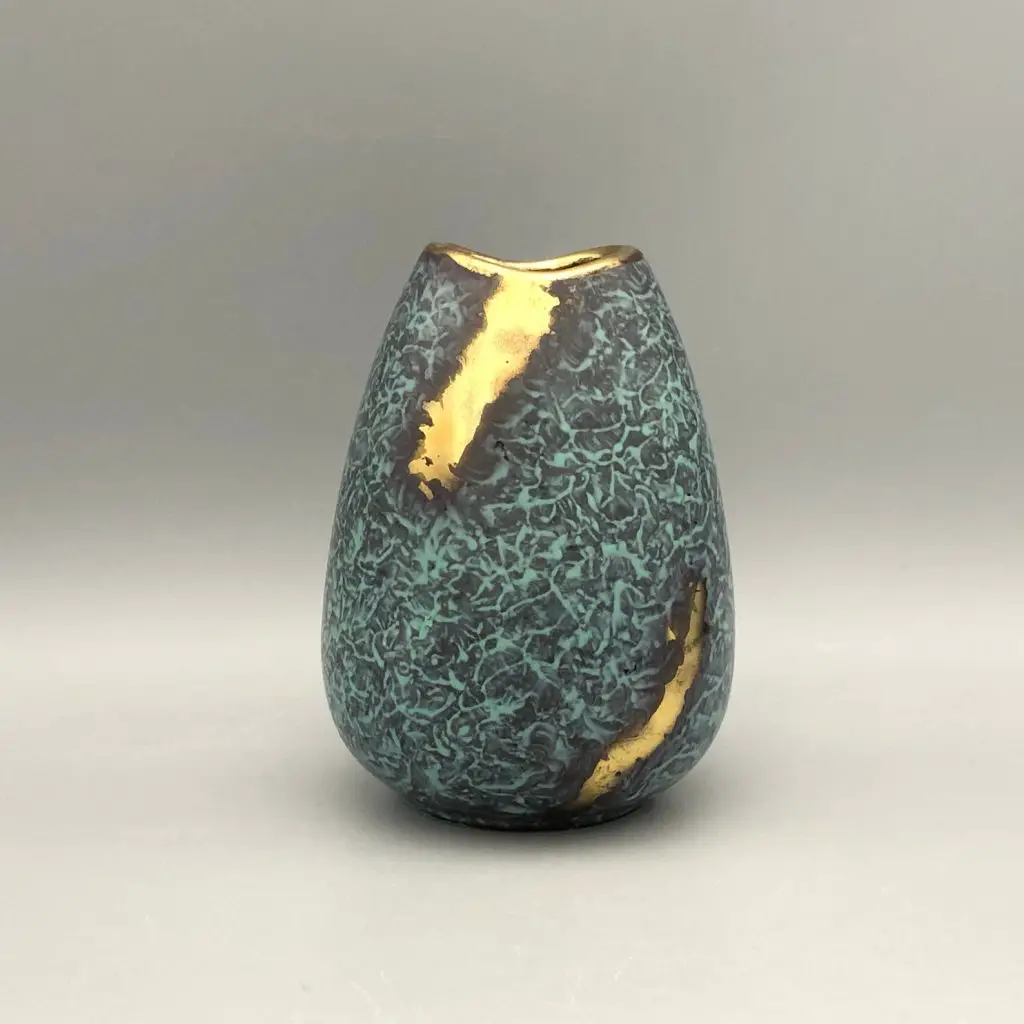
3. This pair of round bottom vases also features an olive green design against a white-glazed background. While one features a round mouth, the second one has a wide mouth with wooden basket handles. The second one has a mouth that has been bent inwards at two sides, creating two outward arches.
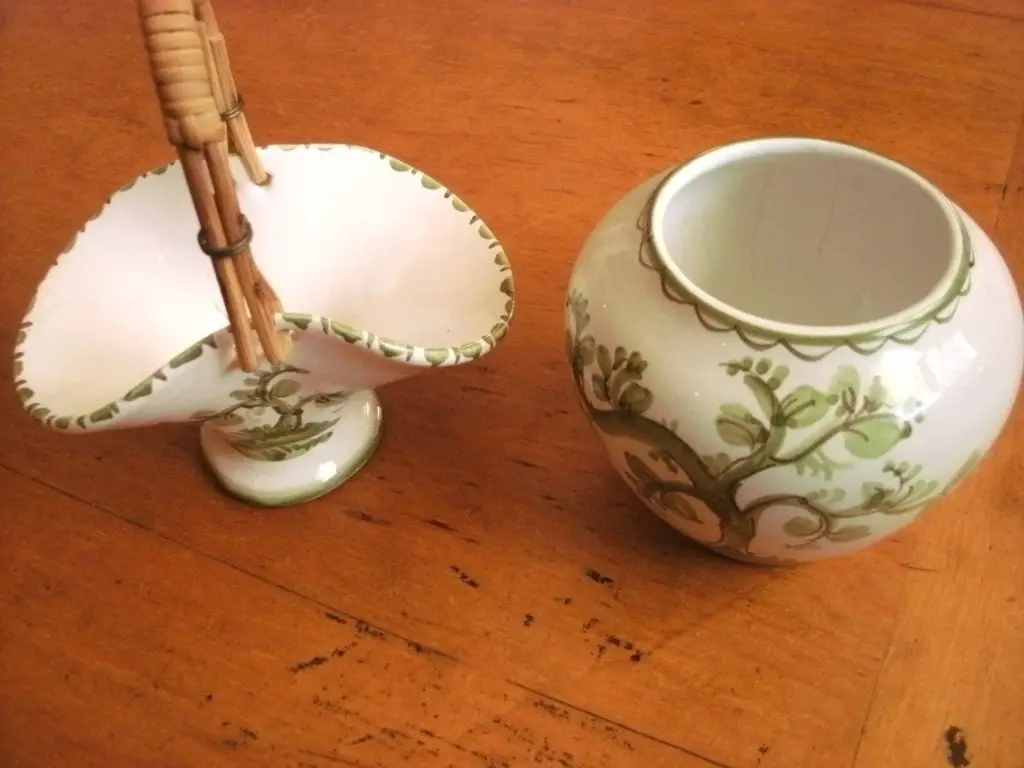
4. This hand-painted vintage bud vase by Ulmer Keramik features a simple floral design. The green, blue and red design against the white background gives it its subtle elegance.
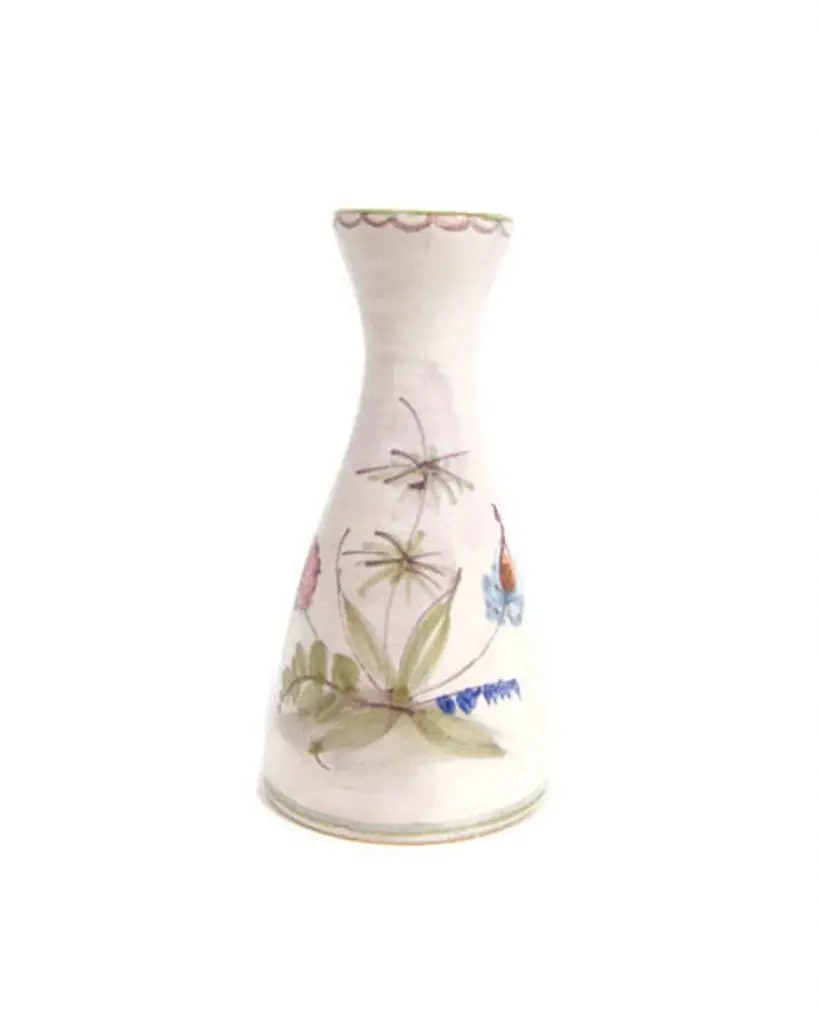
5. This sage green pitcher with a gold spout is an antique piece from the 1950s. It displays the smoother version of the volcanic glaze technique, a telltale marker of the absence of silicon carbide.
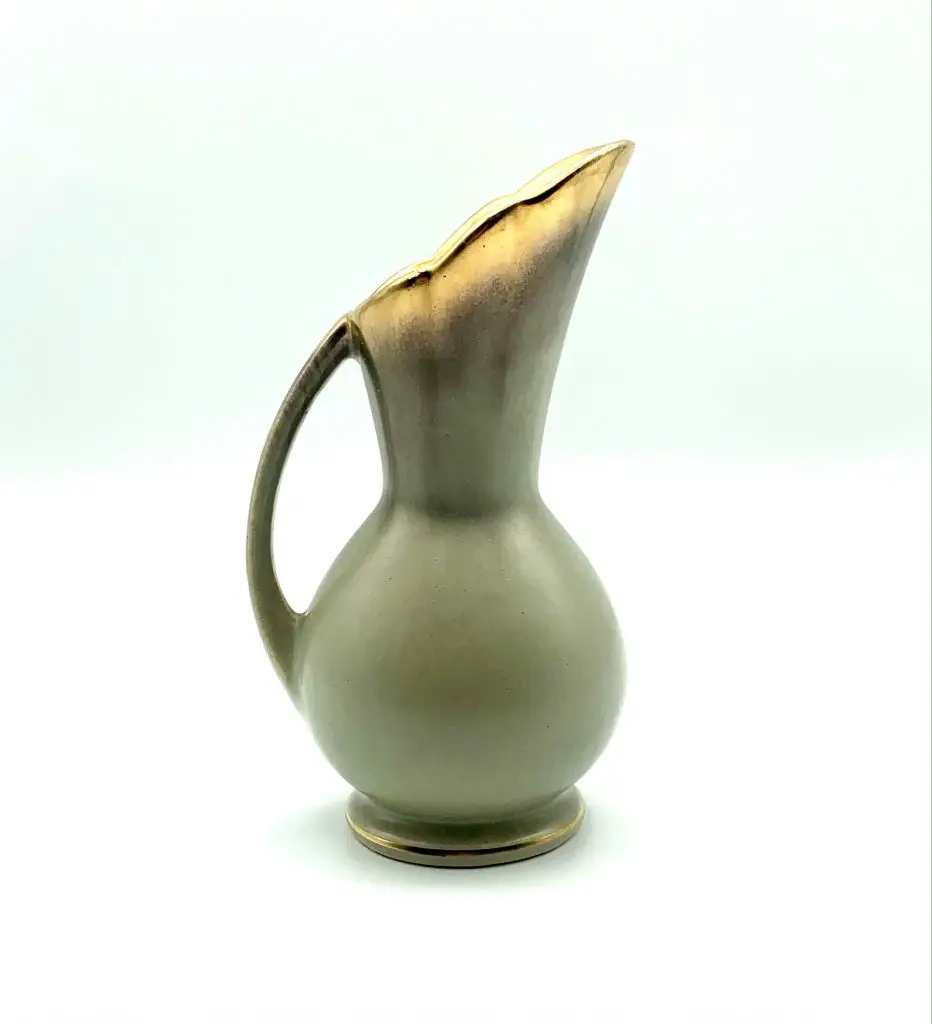
The notoriety of pottery has spread far and wide, such that cultures have added aspects of their culture to it. Perhaps the most prominent of these additions are the glazes and glazing techniques used.
Keramik pottery is replete with all kinds of pottery, all of which reflect aspects of the Western German culture and soothe the soul.



